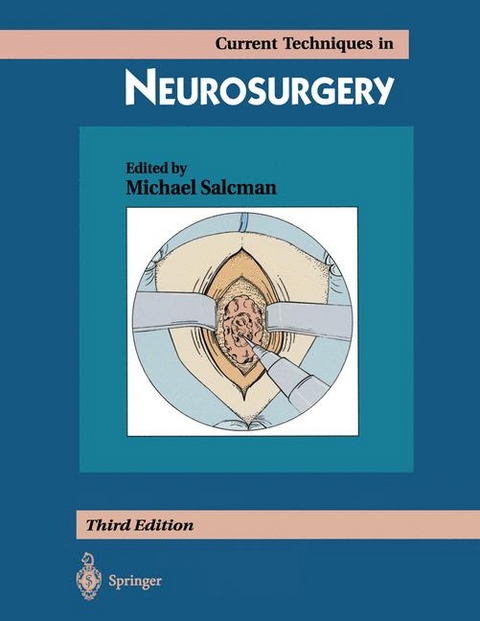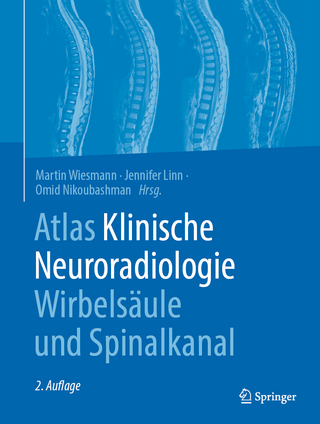
Current Techniques in Neurosurgery
Springer-Verlag New York Inc.
978-1-4613-9352-8 (ISBN)
- Titel wird leider nicht erscheinen
- Artikel merken
Section I: Pain.- 1 Status of Deep Brain Stimulation.- Deep Brain Stimulation for Pain.- Deep Brain Stimulation for Epilepsy.- Deep Brain Stimulation for the Persistent Vegetative State.- Chronic Stimulation for Movement Disorders.- 2 The Surgical Management of Greater Occipital Neuralgia.- Anatomy and Physiology.- Differential Diagnosis.- Nonsurgical Approaches.- Surgical Approaches.- 3 Implantable Drug Delivery Systems.- Backgrounf.- Pharmacodynamics of Intrathecal Drug Administration.- Implantable Pump Technology.- Technique of Pump Implantation.- Clinical Applications.- 4 Radiosurgery Versus Microsurgery for Trigeminal Neuralgia.- History.- Indications.- Surgical Technique.- Gamma Knife Radiosurgery.- Microvascular Decompression Versus Gamma Knife Pathophysiology of Trigermina; Neuralgia.- Section II: Seizure Disorders.- 5 Current Theories of Epileptogenesis.- Model Systems for Epilepsy.- Epileptic Neurons or Epileptic System?.- The Role of Disinhibition.- Mechanisms of Absence (Petit-Mal) Seizures.- Localization of the Site of Seizure Onset.- Genetic Mechanisms in Epilepsies.- Epilepsy Versus Seizures.- Mechanisms of Antiepileptic Drugs.- 6 Cortical Mapping and Language Outcome in Temporal Lobe Surgery.- Group Comparisons of Long-Term Language Outcome Following Anterior Temporal Lobectom.- Identification of Individual Risk of Language Impairment Following Anterior Temporal Lobectomy.- Reliable Change Index.- Risk to Individual Language Outcome Following Tailored Resections.- Relationship Between Dysnomia and the Pathologic Status of the Hippocampus.- Implications for Surgical Management.- 7 Multiple Subpial Transsections.- The Rationale for Multiple Subpial Transsections.- Indications.- Clinical Efficacy of Multiple Subpial Transsections.- Surgical Technique.- Section III: Spine.- 8 Microdiskectomy Versus Endoscopic Diskectomy.- Microdiskectomy.- Microendoscopic Diskectomy.- Microdiskectomy Versus Microendoscopic Diskectomy.- 9 Current Treatment of Upper Cervical Spine Fractures and Dislocations.- Anatomy and Biomechanics.- Injuries.- Section IV: Cerebrovascular Neurosurgery.- 10 Pharmacological Advances in Cerebrovascular Protection.- Cerebral Ischemic Injury.- Barbiturates.- Calcium Antagonists.- Glutamate Antagonists.- ?-Aminobutyric Acid Antagonists.- Tirilazad.- Citicoline.- Lubeluzole.- Hypothermia.- Other Drugs.- Proposed Neurosurgical Neuroprotection Paradigm.- 11 Endovascular Therapy for Intracranial Aneurysms.- Parent Vessel Occlusion.- Endosaccular Occlusion.- 12 Radiosurgery for Vascular Malformations.- The Radiobiology of Radiosurgery.- Arteriovenous Malformations.- Cavernous Malformations.- Dural Arteriovenous Fistulas and Malformations.- 13 Current Indications for Carotid Endarterectomy.- Cooperative Trials.- Clinical Approach to the Patient with Carotid Stenosis.- 14 Image Reconstruction and Robotic Technology in Neurovascular Surgery.- Principles and Applications of Cerebral Hemodynamics.- Computational Modeling.- Image Reconstruction and Robotic Surgery.- Telesurgery.- 15 Molecular Biology of Cerebrovascular Diseases.- Angiogenesis.- Pathophysiology of Stroke in Relation to Arterial Hypertension.- Molecular Biology of Excitotoxicity in Ischemic Stroke.- Gene Expression in Ischemia.- Apoptosis.- Genetics of Stroke.- Section V: Neuro-oncology.- 16 Current Management of Prolactin-Secreting Tumors.- General Considerations and Natural History.- Clinical Presentation.- Treatment.- Recommended Management.- Macroprolactinomas.- Issues Relating to Prolactinomas and Pregnancy.- 17 Recent Developments in the Molecular Biology of Human Brain Tumors.- Brain Tumor Invasion.- Apoptosis.- The Cell Cycle.- Signal Transduction Mechanisms in Human Brain Tumors.- Tumor Suppressor Genes, Including p53, in Human Brain Tumors.- 18 The Current Status of Radical Resection for Gliomas.- Low-Grade Gliomas.- Malignant Gliomas.- Complications.- Intraoperative Maneuvers.- Preoperative Planning.- 19 Current Management of Medulloblastoma.- Epidemiology and Molecular Pathogenesis.- Classification.- Symptoms and Signs.- Preoperative Evaluation.- Surgery.- Adjuvant Therapy.- Diagnosis and Management of Recurrent Disease.- Sequelae ofTreatment.
| Zusatzinfo | 20 Tables, black and white; 212 Illustrations, color; 41 Illustrations, black and white; XII, 241 p. 253 illus., 212 illus. in color. |
|---|---|
| Verlagsort | New York, NY |
| Sprache | englisch |
| Maße | 216 x 280 mm |
| Themenwelt | Medizinische Fachgebiete ► Chirurgie ► Neurochirurgie |
| ISBN-10 | 1-4613-9352-3 / 1461393523 |
| ISBN-13 | 978-1-4613-9352-8 / 9781461393528 |
| Zustand | Neuware |
| Haben Sie eine Frage zum Produkt? |
aus dem Bereich


